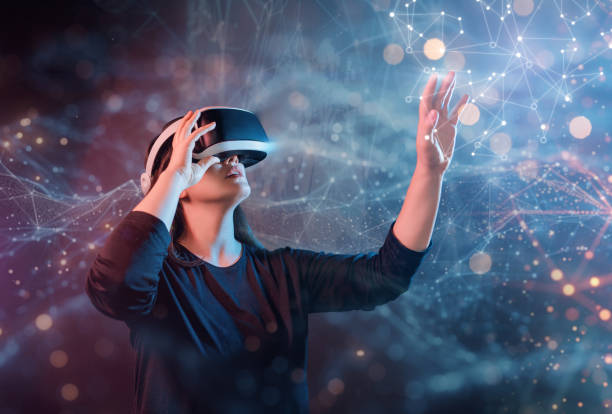AI and Augmented Reality: Transforming the Way We See Ourselves
The world goes through constant changes owing to the progress made in the field of Artificial Intelligence (AI) and Augmented Reality (AR) technology. These technologies, while enabling innovation, tend to disrupt and dismantle existing systems, notions of identity and socialization, and even an individual’s self-perception on a deeper level. AI and AR technologies are enhancing self-perception through augmented beauty products, virtual makeovers, and real-time fitness coaching. The fusion allows everyone to attain their ideal self-image. “Seeing is believing” has never been truer than today, but as the article will contemplate, what we are watching sometimes creates illusions that influence what we believe and how we feel about ourselves. It is very important to fathom self-perception and the role that technologies play as one attempts to understand their digital environment.

What is Augmented Reality?
Augmented reality is a technology that merges the digital world with the real world in real time. Unlike virtual reality, augmented reality focuses on integrating parts of the real world with elements of the digital world simultaneously. Advancements in computer vision, depth tracking, and simultaneous localization and mapping (SLAM) technology have made such improvements possible. In contrast to standard reality, augmented reality can be experienced through tablets, smartphones, and smart glasses. In gaming, users can actively interact with augmented reality, as well as in surgical medicine where a surgeon sees 3D hyper-real images of anatomy in real life and operates.
With augmented reality applied in retail, users can now see what a certain product—like apparel or accessories (using tools like clothoff)—will look like in their space prior to buying it. Smart AR demos assist consumers in shopping more efficiently and confidently. Companies incorporating augmented reality into their businesses report having happier clients, which demonstrates how adopting advanced digital technologies can change user experience for the better. In particular, visuals of potential purchases are important when building customer loyalty to a brand.

The Role of AI in Transforming Augmented Reality
The integration of AI into augmented reality applications undoubtedly improves user experience. AI applications, especially in image recognition and natural language processing, primarily power the features of AR applications. For instance, Iris offers an AI that analyzes facial features, suggests makeup ideas, and modifies the image in real time. Such applications have machine learning functions that adapt to users’ preferences and habits to create more personalized experiences. Moreover, AI makes it possible to control AR applications through voice commands, thus enhancing usability.
Consider these important examples of the influence of AI on augmented reality:
- Snapchat Filters: These filters employ AI to analyze a user’s facial expressions and enhance them with fun effects.
- IKEA Place: This app uses AR to let users see how furniture would look in their homes, combined with AI-driven recommendations based on personal style.
- L’Oreal Virtual Try-On: This feature allows consumers to experiment with makeup looks in real time, thanks to AI that identifies facial features.
| Industry | AR Application | AI Integration |
|---|---|---|
| Gaming | Pokémon GO | Real-time location and object recognition |
| Healthcare | AccuVein | Image recognition to visualize veins |
| Retail | Sephora Virtual Artist | Facial analysis and product recommendations |
Personalization: A Core Aspect of AI and AR
Focusing on personalization, AI technology has allowed augmented reality applications to become more engaging than ever. After gathering and analyzing complex user data, AI has the ability to create personalized content for users, enhancing the level of interaction and technology adoption significantly. Users are now able to create self-identity augmented images of themselves. However, personalization affects more than just enjoyment; it changes how people perceive beauty, fitness, and lifestyle.
The ability to alter a person’s appearance or an environment through augmented reality can affect society both positively and negatively. While self-enhancement through augmented reality can improve one’s self-image, it may also lead to detrimental effects if unrealistic standards are adopted. Self-worth can take a huge hit when inflationary values are placed on unrealistic standards. As the technology improves, the line between reality and personalization becomes increasingly blurred.
The Psychological Impact of AI and Augmented Reality
Every person can conjure a version of themselves that can easily craft the perfect facade to hide behind, and through the use of filters on social media, people do just that. The ensnaring image captures our attention; however, it skews the individual’s perception of their ideal identity. Nonetheless, there still exists the possibility of enhancing self-esteem through intriguing visuals, even if there is a fear of unrealistically raising beauty standards. The growing interest in augmented reality and artificial intelligence makes it quite difficult for researchers to ignore the societal ramifications of such a shift in perception on public self-image and identity.
Recent advancements in artificial intelligence and augmented reality promise fundamental alterations to the self-concept in the foreseeable future. For instance, more empathy is anticipated from AI-integrated AR systems, which support extensive emotion recognition. These technological shifts would improve the scope for self-exploration as well as self-expression. However, while most opportunities seem promising, there is a need to understand the implications of ideal self-representation and its impact on social morality.
Conclusion
The combination of augmented reality and artificial intelligence allows us to delve deeper into the complex issues surrounding self-identity and self-perception. We are provided with endless tools to engage and express ourselves, but their impacts on self-esteem and beauty standards should not be overlooked. From the user’s perspective, it is crucial to balance augmented self-perception with one’s true self-perception. There are promising technological paradigms predicted for the future, but to optimally harness them, a conscious approach to technology is necessary. Such is the case with AI and AR – they offer the possibility of accomplishing more while addressing fewer issues. However, many obstacles must be overcome, which will ultimately change how individuals identify themselves in contemporary society.
Frequently Asked Questions
Where does Augmented Reality differ from Virtual Reality? While Augmented Reality enhances the real world by adding digital content, Virtual Reality creates an entirely simulated experience in a wholly virtual world.
How does AI improve the experience of Augmented Reality? AI enhances AR with capabilities such as real-time recognition of objects, tracking of user gestures, and personalized content distribution based on user activity.
Can AI and AR influence self-esteem? They can positively impact self-esteem by enhancing self-image, or negatively affect it by promoting unrealistic standards.
What industry is more profoundly impacted by AI and AR technology? The most affected industries include gaming, healthcare, education, retail, and beauty, as all integrate these technologies in novel ways.
What AI and AR applications would you propose for the future? I would suggest that future applications include more engaging educational tools, sophisticated virtual fashion try-ons, and tailored instruction across different industries.


